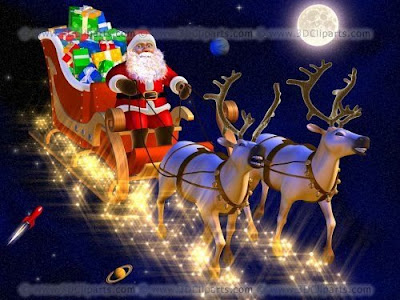Before I decided to draw Santa Claus, I wanted to draw elk but an idea that Santa Claus pull his sledge himself after extinction of elk pop out from my brain.
I feel that this is an interesting idea so I laugh suddenly and my giggle on class frighten my friend, Sarah who sat beside me.
If global warming continue, extinction of many animals and plants will happen indeed. I believe that extinction of elk will also occur in the future if we continue destroying the nature environment.
I hope that my finishing poster which show christmas without elk will give attraction and awareness to people.

Therefore, I found many pictures of Santa Claus and sledge.
Below is some of my reference pictures.



My sketches: 
Because I wasted time on other matters and paid too much attention to those lines and colours, there is not enough time to let me draw the sledge. I forced to go print out the Santa Claus before finishing it.
My final output:

















